Dressage is a gorgeous style of riding seen mainly in English riding. Sometimes, dressage is even referred to as equine dance as the horses competing in this sport seem to dance as they perform a variety of moves, transitions, and other things asked of them by their rider.
What Is Dressage?
Dressage is a sport usually ridden in the English style (there is Western Dressage as well). The word Dressage comes from the french word Dresser which actually means ‘to train’ in French. In dressage competitions, horses are expected to accept the bit, listen to the rider, and appear to be going through all the motions on their own without cues from their rider. The Dressage competitions expect horses to put on a show of responsiveness, acceptance, and exceptional training. In these competitions, horses must demonstrate basic movements and commands as well as advanced ones.
Where Did Dressage Originate?
It is believed that Dressage was originated in Ancient Greece before being refined and known as classical dressage in the Renaissance Period.
The region in Ancient Greece where this originated was in Athens. An Athenian soldier named Xenophon made an ‘On Horsemanship’ manual. Though dressage officially started in Ancient Greece in the third century BC, it wasn’t formally recognized even as an art form until the 15 and 16 hundreds.
Dressage competitions only became present in the 1800s and have increased in popularity gradually up until this day. Now, Dressage is an Olympic sport and there are multiple levels of Dressage competition. Not only is it seen as a sport, but it is also seen as an art form. The Dressage industry is huge and it is only growing.
What Is Expected Of The Horse?
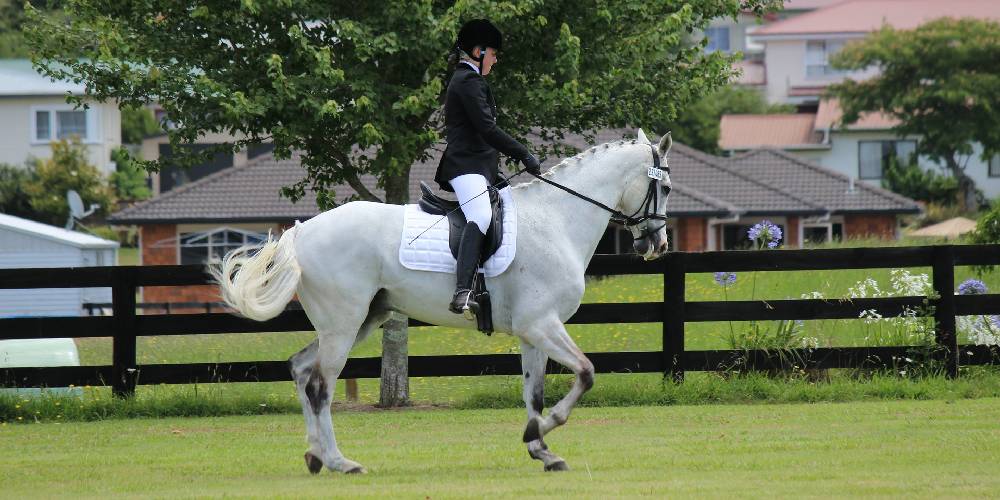
The horse being ridden in the competition is expected to respond to the rider’s cues seamlessly. The horse should be extremely responsive so the horse looks as if they are going through the motions on their own will.
The horse must be totally obedient and moves forward while collected. The horse should have his quarters up under himself and should move confidently and smoothly. No hesitation should be shown by the horse and they should willingly follow commands.
Do Dressage Horses Like Their Job?
Some horses absolutely love their job. Horses who do dressage like to put in the hard work and learn new patterns and displays. Horses shouldn’t mind dressage at all unless they learn to dislike it due to someone riding with harsh hands and constant sawing on the bit.
Horses should, if they don’t like it, accept the rider as their partner and move together as one.
Is Dressage Dangerous?
Like any other equine sport, dressage can be dangerous. If a rider falls, there is potential injury involved and if a horse bucks or spooks there can be potential injury there as well. Because dressage doesn’t involve jumping or extremely fast paced work, it is of the less dangerous sports in the horse world.
Different Dressage Moves and Commands
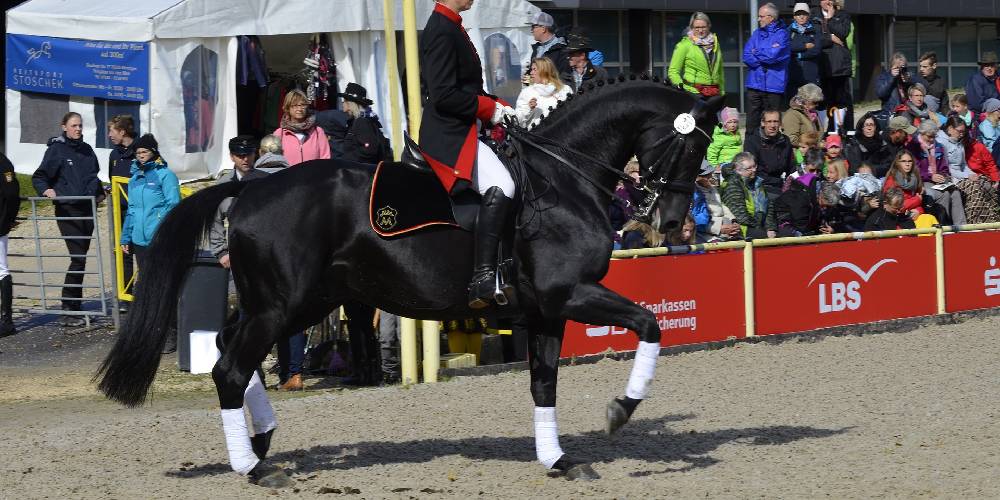
Side Passing
Side passing is just a movement where the horse will walk completely laterally or sideways and it is typically seen at the walk but can be done at the trot as well. When side passing, the horse will cross its legs to step to the side.
Pirouette
A pirouette is similar to that seen in the ballet dance, only in horses. Horses will turn in a circle while pivoting on their hind legs and this is done at the trot, piaffe, or canter.
Piaffe
A piaffe is basically a trot done in place. Horses will seem to prance on the spot. This is a common move to see dressage horses perform and it can be extremely difficult to train a horse to do such a movement.
Travers Or Haunches In
Travers, also known as haunches in is a movement performed by a horse where the horse will move in a diagonal motion with their head closer to the rail and their hindquarters closer to the inside of the arena.
It is called haunches in because the horse will put his haunches more into the inside of the arena and put his head closer to the rail.
Shoulder In
Shoulder in is basically the opposite of the haunches in movement as the horse’s head and shoulder will be more inside the arena and the haunches will be more facing the rail. The horse will move forward while their body is angled diagonally.
Leg Yield
The leg yield is often confused with side passing as the horse will move sideways in this movement. The leg is pushed into the horse’s side and the horse will ‘yield’ from it and let the leg push it laterally. This movement is most commonly seen performed at the trot.
Dressage Penalties
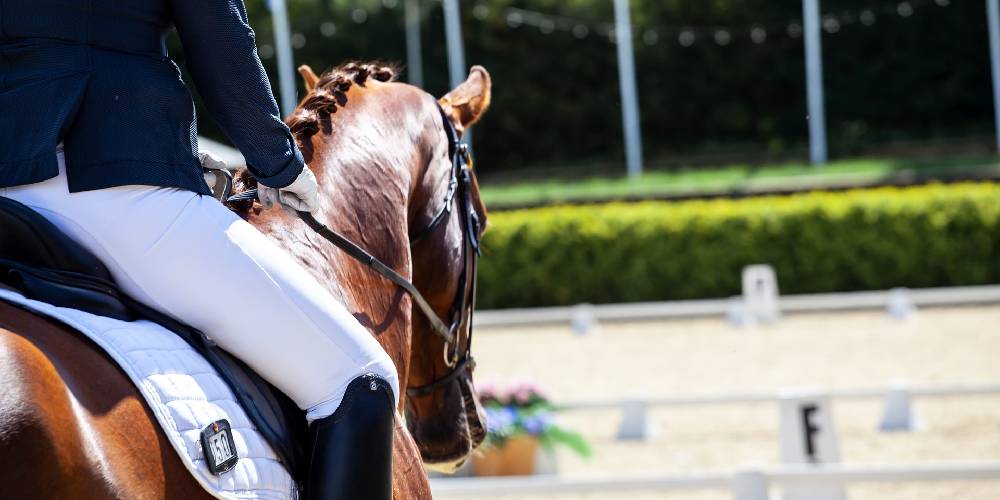
Penalties are given to dressage riders based on mistakes done by them or their horse. There are three penalties given.
First Mistake
The horse or rider when making their first mistake will be deducted two points from their overall score for that specific command.
Second Mistake
When a horse or rider makes their second mistake, they will have four points deducted form their score for that specific command.
Third Mistake
After a horse and rider makes their third mistake, the horse will be eliminated from the dressage competition.
How Is Dressage Judged?
Dressage is judged on the horse and rider’s unity and harmony as the pair complete a variety of patterns. When looking at the horse, the judges are looking for complete obedience, acceptance of their bit, and the smoothness of their transitions. It should appear that the horse is going through the movements on their own and no hesitation shluld be shown on the hrose’s part.
When looking at the rider, the rider should be in sync with the horse’s movement, demonstrate balance, and maintain complete control of the horse. In this discipline, the rider will also be judged on their ability to communicate with the horse and their equitation.
The arena is marked with a certain number of letters and it is between these letters that the horse will demonstrate different gaits and perform certain moves.
How Old Should A Horse Be Before It Starts Doing Dressage?
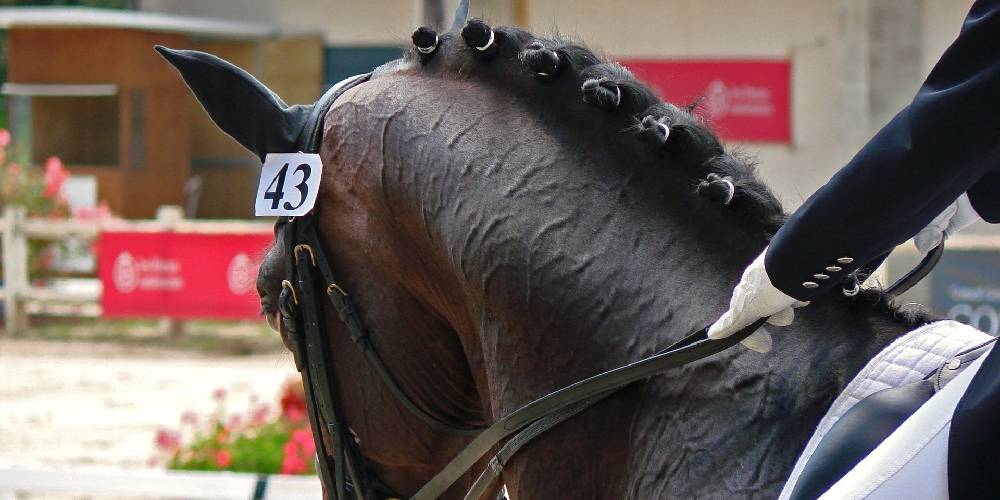
Horses can start basic dressage training at the age of around three years old. Because dressage requires complete obedience, extensive training, and a variety of difficult movements and maneuvers, it can take a long time to teach a horse to do dressage. The younger the horse is when training begins, the better.
How Long Does It Take To Train A Horse Into Dressage?
If you are hoping to get your horse good enough at dressage to the point where it can compete at the Grand Prix level, it can take up to five years of extensive training to get to that level. Some horses, especially stallions, are really difficult to handle so it can take even up to six or seven years to teach the horse the commands and get them to completely submit themselves to their rider.
At What Age Should A Horse Stop Doing Dressage?
There is no set age limit for a horse to do dressage. I actually recommend to keep your horse in dressage because it strengthens their body and mind so much more than other sports and disciplines would.
Horses should only stop doing dressage if they are lame or are letting their rider, owner, or handler know that they are ready to retire.
What Do Dressage Riders Wear?
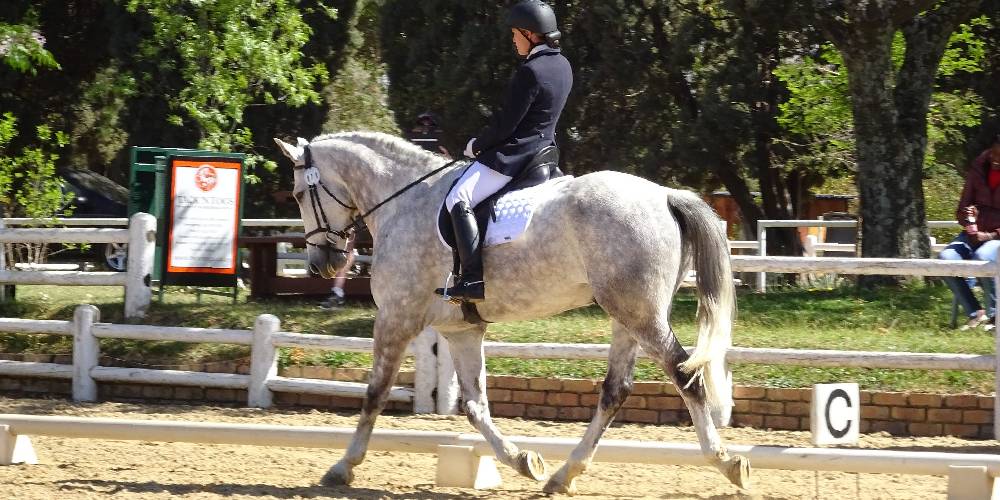
Top Hat Or Helmet
Dressage riders are often seen wearing a top hat into the competition arena. The color of these hats is usually black and they can be seen as shiny or matte.
If the rider isn’t wearing a top hat, they are usually wearing a helmet instead. Like the top hat, the helmet is usually black and can be shiny or matte as well.
Jacket
The jackets worn by dressage riders often have tails that hang down behind them. The jackets are often seen with buttons on the front and can be nearly any color, but most commonly seen as black, blue, red, and green.
Breeches
Breeches are seen in all types of English riding styles, including dressage. In this sport, the breeches worn in the show ring are usually white, as tan breeches are more common in hunter English classes.
Boots
Boots are a must have in any style of riding, but especially in dressage. Because the class is partly judged on the rider and their appearance, it is important to dress nicely. This is why tall dressage boots are worn in this class. They help the rider and make them appear neater and cleaner.
What Tack Is Used On Dressage Horses?
Dressage Saddle
Dressage saddles are a special type of saddle that has a high cantle and a high pommel. The saddle also features a deep seat and long saddle flaps.
Dressage Saddle Pad
A dressage saddle pad is a pad that is long enough and big enough to fit under a dressage saddle. They are usually padded and quilted offering a more comfortable experience to the horse.
Bridle
There are special bridles made specifically for the dressage horse. Often, these bridles will have a thicker or wider nose band that might be padded.
Double Reins
Double reins are a common sight in the dressage arena. One set of reins is used to help keep the horse’s head down, and the other set is used to steer and direct the horse.
Breeds That Excel In This Discipline
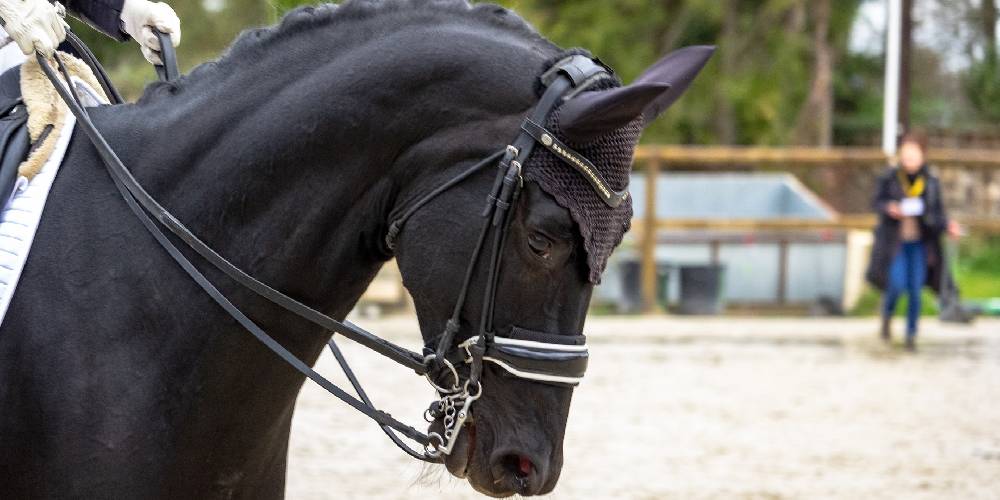
This is a really difficult section to write as there are so so so many different breeds that do well in dressage. Some examples of breeds that excel in this sport are:
- Friesians
- Gypsy Vanners
- Shires
- Thoroughbreds
- Oldenburgs
- Haflingers
- Hanoverians
- Trakheners
- Percherons
- Andalusians
- Dutch Warmbloods
- Swiss Warmbloods
- Westphalian
- Irish Sport Horse

